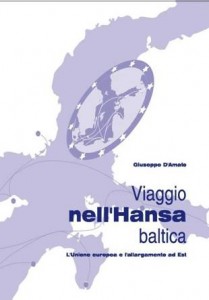Turkmenistan. Diversifying export routes. Ashgabat’s strategy.
27 Sep 2010Ashgabat continues its policy of diversifying export routes for its raw materials. “This station will make it possible to increase supplies of gas to the Turkmenistan-China pipeline”, Turkmenistan President Gurbanguly Berdymukhammedov said, speaking at the Bagtyayrlyk launch ceremony. “It can pump 60 million cubic meters of gas a day”, he added. China is set to become the largest buyer of gas from Turkmenistan over the coming years as a pipeline linking the two countries, through Uzbekistan and Kazakhstan, reaches full capacity. Deliveries began earlier this year and are expected to hit 40 billion cubic meters in 2015. The opening came as China and Russia signed a raft of energy deals, including on increasing natural gas exports to Beijing. Gazprom, Russia’s state-controlled gas producer, said it expects to be able to supply China with 30 billion cubic meters of gas annually starting in late 2015.
“In addition to supplying Russia, China and Iran, we are also taking concrete measures to accelerate progress in the construction of the Turkmenistan-Afghanistan-Pakistan and India pipeline in concert with the member countries of this large-scale project,” Berdymukhammedov said. At the end of August Turkmenistan and Afghanistan signed an agreement on construction of the Trans-Afghanistan (TAPI) gas pipeline for the transfer of Turkmen gas to Pakistan and India which have expressed interest in buying up to 70 billion cubic metres annually, by the end of this year. The TAPI project, first put forward in 1995, was promoted by the country’s late leader, Saparmurat Niyazov, in the early 2000s. It secured strong support from Washington after a U.S.-led offensive ended the Taliban’s five-year rule over Afghanistan in 2001. Turkmenistan has previously estimated the cost of the project at $3.3 billion. Natural gas to fill the pipeline could be drawn from the massive South Yolotan deposit, currently under development, and the existing Dovletabad field.The planned pipeline would have initial capacity for 33 billion cubic metres a year and would run for nearly 2,000 km (1,250 miles), including 735 km across Afghanistan and another 800 km through Pakistan. Despite receiving financing from the Asian Development Bank (ADB) the project, whose route would take it through conflict torn-Helmand and Kandahar in Afghanistan and Quetta in Pakistan, has been held up by security problems.
Earlier, on May 21st, Berdymuhammedov unexpectedly signed a decree stating that companies from Turkmenistan will build an internal East-West gas pipeline allowing the transfer of gas from the biggest deposits in Turkmenistan (Dowlatabad and Yolotan) to the Caspian coast. The East-West pipeline is planned to be around 1000 km long and have a carrying capacity of 30 bn m³ annually, at a cost of between one and one and a half billion US dollars. Construction of the pipeline is to be financed by the Turkmengaz company; it will begin this June and last five years.
Some experts say that this decision is probably motivated by Ashgabat desire to maintain its influence on which direction its gas is exported from the Caspian coast; gas can flow from there to Europe (for example, along the projected trans-Caspian route), to Russia (along the planned Caspian route), or to Iran (along the already existing Korpeje-Kurt Kuy route). By not taking a final decision on which way to export its gas from this new pipeline, Ashgabat can extend and heat up the rivalry between Russia and the West for Turkmenistan’s gas.
Giuseppe D’Amato
See also EuropaRussia February 3rd, 2010.
- In: Energy&Economy
Comment Form
Welcome
We are a group of long experienced European journalists and intellectuals interested in international politics and culture. We would like to exchange our opinion on new Europe and Russia.
Categories
- Breaking News (11)
- CIS (129)
- Climate (2)
- Energy&Economy (115)
- EU Eastern Dimension (85)
- Euro 2012 – Sochi 2014 – World Cup 2018, Sport (43)
- Euro-Integration (135)
- History Culture (198)
- International Policy (261)
- Military (74)
- Interviews (18)
- Italy – Italia – Suisse (47)
- Odd Enough (10)
- Poland and Baltic States (126)
- Religion (31)
- Russia (421)
- Survey (4)
- Turning points (4)
- Ukraine (176)
- Российские страницы (113)
Archives
- November 2020
- October 2020
- September 2020
- August 2020
- July 2020
- May 2020
- April 2020
- March 2020
- January 2020
- December 2019
- November 2019
- October 2019
- September 2019
- August 2019
- July 2019
- June 2019
- May 2019
- April 2019
- March 2019
- February 2019
- December 2018
- November 2018
- October 2018
- September 2018
- August 2018
- July 2018
- June 2018
- May 2018
- April 2018
- March 2018
- February 2018
- January 2018
- December 2017
- November 2017
- October 2017
- September 2017
- August 2017
- July 2017
- May 2017
- March 2017
- January 2017
- December 2016
- November 2016
- October 2016
- September 2016
- July 2016
- June 2016
- May 2016
- April 2016
- February 2016
- January 2016
- November 2015
- October 2015
- September 2015
- June 2015
- April 2015
- March 2015
- February 2015
- January 2015
- December 2014
- November 2014
- October 2014
- September 2014
- August 2014
- July 2014
- June 2014
- May 2014
- April 2014
- March 2014
- February 2014
- January 2014
- December 2013
- November 2013
- October 2013
- September 2013
- August 2013
- July 2013
- June 2013
- May 2013
- April 2013
- March 2013
- February 2013
- January 2013
- December 2012
- November 2012
- October 2012
- September 2012
- August 2012
- July 2012
- June 2012
- May 2012
- April 2012
- March 2012
- February 2012
- January 2012
- December 2011
- November 2011
- October 2011
- September 2011
- August 2011
- July 2011
- June 2011
- May 2011
- April 2011
- March 2011
- February 2011
- January 2011
- December 2010
- November 2010
- October 2010
- September 2010
- August 2010
- July 2010
- June 2010
- May 2010
- April 2010
- March 2010
- February 2010
- January 2010
- December 2009
- November 2009
- October 2009
- September 2009
- August 2009
Our books




